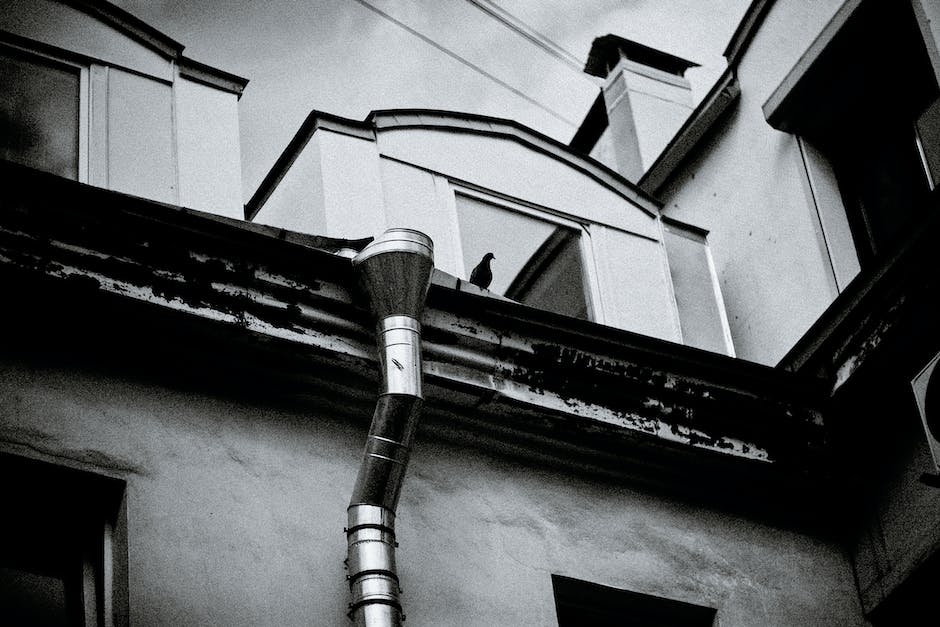The size of the toilet drain pipe is an important consideration when installing a new toilet. The pipe must be large enough to accommodate the new toilet and any other fixtures that will be connected to it. The size of the pipe will also affect the flow of water and the capacity of the septic tank.
The size of the average toilet drain pipe is two to four inches in diameter.
Table of Contents
What size should a toilet waste pipe be?
A typical toilet waste pipe is 100mm/4 inches in diameter. When a house is being newly built or completely renovated, it’s relatively easy to route this large pipe from the toilets to the drain. However, in an existing house, it may be more difficult to find a route for the pipe that doesn’t require cutting through walls or floors. If you’re having trouble finding a route for the pipe, you may need to call a professional plumber for help.
It is simple physics that 3 inch is the minimum and will actually work better if you have low volume flush toilets.
What is the minimum size drain pipe for a toilet
A lavatory requires a minimum 1 ¼ drain and vent pipe size. The minimum slope required for drainage piping less than 4 in pipe size is ¼ per foot slope. Section 701 1 of the plumbing code lists all of the approved drainage piping materials.
PVC pipes are a versatile and lightweight option for plumbing. They are known for their blockage resistance and are often used as part of a sink, toilet, or shower drain line. PVC piping can also be used as a home’s main water supply pipe.
Should I use 3 inch or 4-inch toilet drain?
There are several things to consider when deciding whether to install 4-inch drains or 3-inch drains in new construction. One is the size of the drain pipe. Older homes may have only 3-inch drains, so that’s what you have to work with. Another consideration is the number of toilets. If you have a lot of toilets, you may want to consider installing 4-inch drains to help with the flow. Finally, you’ll need to think about the layout of the house and where the drains will be located. If you have a lot of plumbing in one area, you may want to go with the 4-inch drains to avoid any clogs.
If you have low volume flush toilets, 3 inches is the minimum that will actually work better. It is simple physics.
Are most toilets 2 or 3 inch?
There are a few things to keep in mind when choosing a flapper for your toilet. The most important thing is to make sure that the flapper you choose is the right size for your toilet. A majority of toilets will use the two inch flapper; however three inch flappers have become popular in recent years and can be found in newer toilets manufactured since 2005. An easy reference for determining your toilet’s flapper size is to look at the flush valve drain opening at the bottom of your tank. Another thing to consider is the material the flapper is made from. Some flappers are made from rubber which can degrade over time and cause leaks. Others are made from silicon which is more durable and less likely to cause leaks.
Please note that the international plumbing code only recommends 15″ for the height of your vent. It is possible that your local building code requirements are different and you may need a taller vent.
Is my toilet 2 or 3 inch
When you are looking at the flush valve drain opening at the bottom of your tank, you will need to determine the size of the flapper that you need. If the opening looks about the size of a baseball or orange, you will need a 2″ flapper. If the opening looks about the size of a softball or grapefruit, you will need a 3″ flapper.
If the pipe is too big, the water will run around the solids, causing the solids to sit in the pipe. This can harden and clog the drain, or rust and deteriorate the pipe if it’s not PVC. A toilet only has a 2″ trap built into it, so the solids get pushed through.
Can a shower and toilet share a drain?
It’s possible to connect a toilet’s drainage line to a shower’s drainage line, as long as they both have separate waste trap arms. However, doing so may cause blockages and smells from certain drains.
If your toilet isn’t flushing or if the water level in the toilet is low, it could be a problem with the supply line. The supply line is the small metal piece that’s attached to both the toilet and your wall. It runs water into the toilet from a small metal tube and pulls water from the interior wall water lines. You can usually turn the water off or on with a small valve handle.
Supply lines can develop a variety of issues over time. They may become corroded, clogged, or damaged. If you think there might be a problem with your supply line, it’s best to call a plumber to take a look.
Can PVC pipe be used for toilet drain
The three inch is the way to go for a supply of that much weight going through. They are much more durable and can handle the weight without breaking.
PVC pipes are the most common type of pipe used for residential properties. They are ideal for drainage applications as they are able to handle dirty water from sinks and toilets. PVC pipes can also be used for main water supply lines and high-pressure applications.
Can I use PVC pipe for toilet?
PVC pipe is a versatile product that can be used for a variety of applications. It is a good choice for indoor uses because it is soundproof and will not transfer noise from the water flowing through the piping system. PVC pipe is also resistant to corrosion and is easy to clean.
This is a code requirement in order to ensure that the stack can handle the volume of water being used.
What is the most common size for the drain pipe
Pipes for drains come in a variety of sizes, with 1 1/2 inches being the most common size for modern drains. Other sizes include 2-inch and 3-inch pipes. Some older sinks may have even smaller pipes like 1 1/4-inch in diameter, but these are not as common. If you have a standard kitchen sink drain, then a 1 1/2-inch pipe is typically sufficient.
A single drain pipe must be at least 4 inches in diameter in order to support the maximum flow capabilities. If you require more than one drainage zone, you may need to use a larger pipe diameter.
How long can a toilet drain pipe be
There is no limitation in length for the toilet’s trap arm if you’re in the IPC. That means your fixture drain can have an unlimited distance (9091). Keep in mind your toilet still needs a vent, but your trap arm can be as long as necessary.
There are two types of pipes that are commonly used in homes: the 3-inch pipe and the 4-inch pipe. The 3-inch pipe is typically used to pipe toilets, while the 4-inch pipe is used as the building drain under floors or in crawlspaces to transport all the wastewater from a home out to the septic tank or sewer. In some cases, the 4-inch pipe may also be used in a home if it’s capturing two or more bathrooms.
Are all toilet flush pipes the same size
Most toilet flush pipes that go in to the back of the toilet come in 38mm width and may change size as they get closer to the toilet cistern. Some toilet flush pipes can be a slightly different size depending on where they are bought from and if they follow BS regulations.
The minimum distance that a sidewall or nearby fixture must be from a toilet’s flange is 15″. However, it is best to keep a distance of at least 18″ to avoid any potential problems.
Warp Up
A toilet drain pipe is typically between 2 and 3 inches in diameter.
The size of a toilet drain pipe is an important consideration when selecting a toilet for your home. If the pipe is too small, it may become clogged easily. If the pipe is too large, it may result in a very loud flushing noise.
